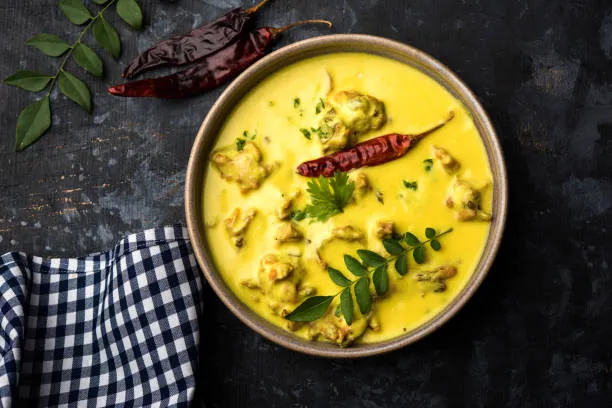Table of Contents
ToggleA Culinary Journey Through Bishnoi Villages: A Vegetarian’s Paradise
Bishnoi villages, nestled in the heart of Rajasthan, India, offer a unique blend of cultural heritage, environmental conservation, and culinary traditions. Known for their strict vegetarian principles and deep-rooted connection to nature, Bishnoi cuisine is a delightful surprise for those seeking authentic and sustainable food experiences. This article delves into the world of Bishnoi culinary delights, exploring the must-try dishes, the philosophy behind their food choices, and valuable tips for travelers venturing into these eco-conscious villages. Traditional Bishnoi Villages Cuisine
The Bishnoi Philosophy: A Vegetarian Lifestyle
The Bishnoi community, founded by Guru Jambeshwar, adheres to a strict vegetarian lifestyle as part of their 29 principles. This philosophy is deeply intertwined with their reverence for all living beings and their commitment to environmental conservation. Bishnoi cuisine reflects this ethos, emphasizing simple, wholesome, and locally sourced ingredients.
Must-Try Dishes in Bishnoi Villages

Bajra Roti
A staple food made from millet flour, Bajra Roti is a hearty and nutritious flatbread. It is often served with ghee, jaggery, or a spicy vegetable curry.

Khichdi
A comforting blend of rice and lentils, Khichdi is a versatile dish that can be customized with various vegetables and spices. It’s a popular choice, especially during the monsoon season.

Ker Sangri
A unique Rajasthani dish featuring ker (dried berries of the Capparis decidua plant) and sangri (dried berries of the Prosopis cineraria tree). It’s a tangy and flavorful preparation that showcases the region’s arid climate.

Gatte ki Sabzi
A delicious vegetable curry made with gram flour dumplings. It’s a rich and satisfying dish that pairs well with Roti or rice.

Kadhi
A yogurt-based curry that is often flavored with cumin seeds, turmeric, and other spices. It’s typically served with Pakoras (deep-fried fritters) or Puri (deep-fried bread).

Bhajiyas
A variety of deep-fried vegetable fritters, Bhajiyas are a popular snack or appetizer. They can be made with potatoes, onions, spinach, or other vegetables.

Lassi
A refreshing yogurt-based drink that can be sweet or savory. It’s a perfect way to cool down on a hot day.

Exploring the Culinary Techniques and Ingredients
Bishnoi cuisine is characterized by its simplicity and the use of locally available ingredients. Some of the common techniques and ingredients include:
- Roasting: Many vegetables and spices are roasted to enhance their flavor and aroma.
- Grinding: Spices are freshly ground to release their essential oils.
- Fermentation: Yogurt is used extensively in cooking and is often fermented to create tangy flavors.
- Millets: Millets, such as Bajra and Jowar, are staple grains in Bishnoi cuisine.
- Legumes: Lentils and beans are a significant source of protein.
- Spices: Cumin, coriander, turmeric, and red chili powder are commonly used to flavor dishes.
Experiencing Bishnoi Cuisine: Tips for Safari Travelers
- Plan Your Visit: Research and plan your visit to coincide with festivals or cultural events where you can experience traditional Bishnoi cuisine.
- Stay in Homestays: Homestays offer the opportunity to immerse yourself in the local culture and enjoy authentic home-cooked meals.
- Communicate with Locals: Interact with the locals to learn about their food habits and preferences.
- Respect Local Customs: Adhere to the local customs and traditions, especially regarding food and hygiene.
- Try Street Food: Don’t miss the opportunity to savor local street food, such as Bhajiyas and Pakoras.
- Capture the Experience: Take photos of the food, the people, and the surroundings to cherish the memories.
Conclusion
A culinary journey through Bishnoi villages offers a unique and enriching experience. By understanding the philosophy behind their food choices and exploring the diverse range of dishes, travelers can appreciate the simplicity, sustainability, and flavor of Bishnoi cuisine. Whether you’re a seasoned foodie or a curious traveler, Bishnoi villages have something to offer every palate.
FAQs
Is Bishnoi cuisine spicy?
Bishnoi cuisine can vary in spiciness, depending on the region and the specific dish. However, it's generally milder than other Indian cuisines.
Are there any vegetarian-friendly restaurants in Bishnoi villages?
Most restaurants in Bishnoi villages are vegetarian-friendly, as the community predominantly follows a vegetarian diet.
What is the best time to visit Bishnoi villages for a culinary experience?
The best time to visit Bishnoi villages is during the winter months (October to February) when the weather is pleasant and festivals are celebrated.
Can I cook my own meals in a homestay?
Many homestays allow guests to cook their own meals, providing access to local ingredients and traditional cooking techniques.
Are there any specific dietary restrictions in Bishnoi villages?
Bishnois follow a strict vegetarian diet and avoid alcohol and other intoxicants.






